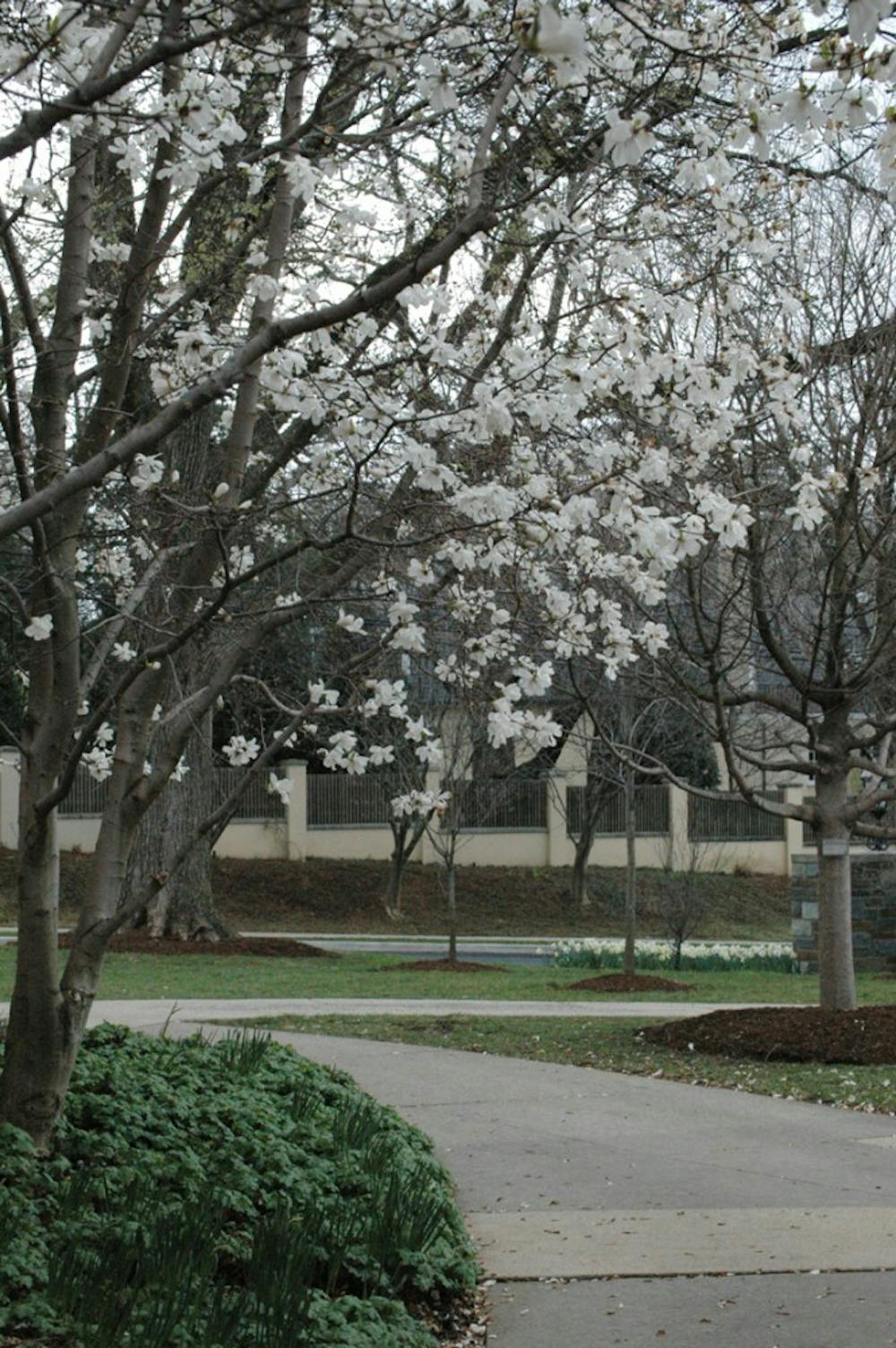Of the roughly 2,000 Franklinia trees in existence, one of them stands here at AU, a specimen of pride for the campus’s arboretum.
John Bartram discovered the rare flowered tree while collecting specimens in Georgia during the mid-1700s with his son.
As a tribute to his friend Benjamin Franklin, Bartram named the tree Franklinia and brought seeds back to Philadelphia.
Since then, the Franklinia tree has disappeared from the wild and only descendants of the seeds collected by Bartram remain.
But in 2002, AU purchased the tree from a nursery in northern Montgomery County, Md., and planted it near the south side of McCabe Hall.
Two years later, AU obtained its arboretum status from the American Public Garden Association (APGA), a nonprofit organization that aims to advance public gardens as a force for positive change in their communities through national leadership, advocacy and innovation, according to its website.
Currently, AU houses more than 2,600 trees and plants about 150 new ones every year.
The next batch will be planted Wednesday for Campus Beautification Day, a yearly event where 300 to 400 students, faculty, staff, alumni and neighbors spend the day working on various beautification and sustainability projects.
Other colleges around the nation have arboretums, but AU is the only one in D.C., according to one of the two landscape architects on campus, Mike Mastrota.
Many schools’ arboretums are separate and sometimes even hours away from the campus, Mastrota said.
“What makes us unique is the whole campus is the arboretum,” he said.
The initial steps to make AU an arboretum started roughly 15 years ago with a big push to upgrade the campus’ aesthetics.
“You’d be surprised how bad it looked back then,” Mastrota said. “As we started doing that, we realized why not take it to the next step and make the campus another educational opportunity and promote the University through the landscape.”
As an APGA-designated arboretum, the University must provide educational opportunities and keep an inventory of the various plants on campus.
A podcast about the arboretum and new brochure have been posted online to allow visitors to talk self-guided tours. The arboretum staff also put tags on trees around campus with their species name.
“The tags also tell where the tree is native,” Mastrota said. “Being a global university, we think it’s important to have trees from all over the world here at AU.”
The arboretum also has several native plants.
“Planting natives enhances the natural ecosystem on campus,” said Mark Feist, the assist director of Grounds, Vehicle Maintenance and Support Services and arboretum committee member. “We also plant adaptable plants to allow for diversity of plants within the arboretum.”
Having an arboretum on campus also adds to the University’s sustainability goals.
“Trees and plants help with carbon sequestration, reduction in building cooling costs, providing a habitat for wildlife and filtering and reducing rain water run off,” Feist said.
AU’s arboretum receives funding from many sources to install and maintain the wide variety of plants.
The funds also cover other projects the University is working on that require landscape work.
Donald and Bonnie Dwares recently donated $100,000 for an endowment to maintain the landscape around the Kogod School of Business.
news@theeagleonline.com





